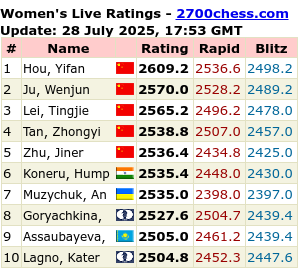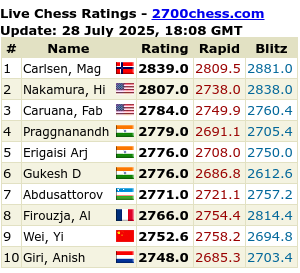7 February 2011, Kuala Lumpur – Armanov discusses the Queen’s Gambit Accepted opening in his blog – MSSM 2010. Read here. It is in Bahasa Malaysia. He discusses some of the games played during the Malaysian Schools Sports Council (MSSM) chess tournament in 2010 and some of the errors committed by some players in playing this opening. It makes an interesting read and useful lessons learned for tournament play.
Pix 1. After 2.c4.
To help along here is a brief introduction to the Queen's Gambit Accepted, commonly abbreviated to QGA, is a chess opening characterized by the opening moves:
The Encyclopaedia of Chess Openings classifies the Queen's Gambit Accepted under codes D20 to D29. The Queen's Gambit is not considered a true gambit, in contrast to the King's Gambit, because the pawn is either regained, or can only be held unprofitably by Black. Black will allow the pawn to be recaptured, and use the time expended to play against White's centre.
As Black's 2. ... dxc4 surrenders the centre, White will try to seize space in the centre and use it to launch an attack on the black position. Black's game is not devoid of counterchances, however. If the white centre can be held at bay, Black will try to weaken White's centre pawns, using that to gain an advantage in the ensuing endgame by playing ... c5 and ... cxd4 at some stage, and if White responds with exd4, White will have an isolated pawn, leading to a keen middlegame battle. If White recaptures with a piece at d4, the centre will be liquidated and a fairly even game will usually ensue.
The Queen's Gambit Accepted is the third most popular option at Black's second move, after 2. ...e6 (the Queen's Gambit Declined) and 2. ... c6 (the Slav Defense). In both of these variations, slow and subtle manoeuvres are often necessary to complete development. White will try to exploit an advantage in space and development, while Black will defend the position and aim for queenside counterplay.































No comments:
Post a Comment